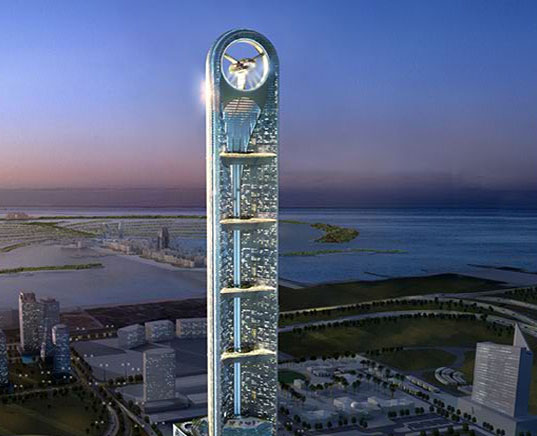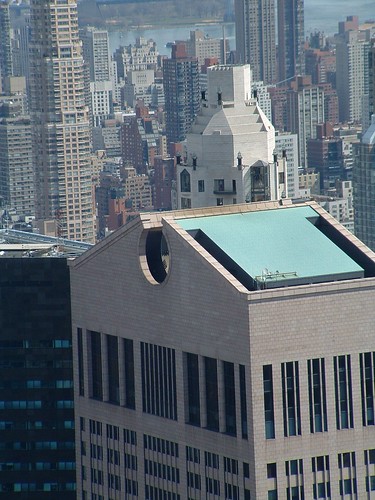[Image via Inhabitat.]
So it looks like Dubai is approaching its Po-Mo phase, Philip Johnson beware!
In an almost deferential move, there is a new building slated for construction that looks like a Turbine (see this post at Inhabitat). Instead of going the Masdar route and building a building that generates its power, this building just refers to the shape of turbines as a way of co-opting the green building trend and making it a design statement. In place of power generation, the “turbine” will generate spectacular views of the desert mirage that is Dubai for the dinners in its floating restaurant.
It is interesting to note that the design firm that built this project Atkins Design is responsible for many other projects in Dubai and the arab world including the Burj Al Alrab and the Jumeirah Beach Hotel. One of their projects which I have wrote about in the past is the Bahrain World Trade Center, which has three actual turbines that generate power for the building.
[Image © rieteree all rights reserved.]
The reason I bring up Po-Mo and Johnson is that this project in Dubai seems such a blatant progeny of his AT&T building (now Sony building) in NYC. This building was meant to evoke the prestige and Americana patriotism of a Chippendale Highboy in the treatment of its roof line. Much like the Vana Venturi house brought post modernism to the home and hearth, Johnson’s AT&T building brought the language of Post Modernism to commercial construction. No longer were smooth glass boxes a la mode, instead references to historic forms were used to tie companies to abstract ideas and emotions.
It will be interesting to see if this new tower in Dubai will change the architectural discourse further. Instead of just buildings referring natural elements such as flames and water droplets (Champana’s Dubai Towers and The Shanghai Cruise Ship Terminal) this new building takes it a step further and refers to power that these natural elements can generate without actually generating it. This contradiction seems to say “Hey look at me, I’m cool, I’m a green product, but not really – I’m so hip I don’t need to be green.” Taking this to its natural conclusion, might we start seeing buildings decked out with “faux-to-voltaic” panels and AstroTurf green roofs? If Dubai is the new New York and considered a barometer of the commercial architectural zeitgeist, we just might.

